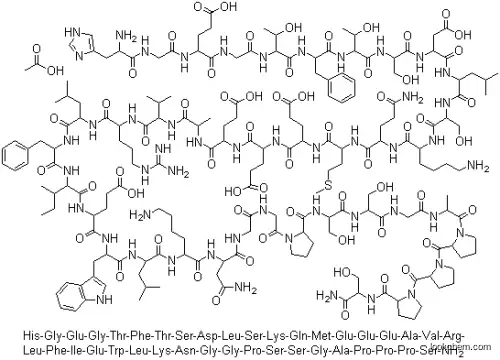Suppliers and Price of Exenatide acetate
- Business phase:
- The product has achieved commercial mass production*data from LookChem market partment
- Manufacturers and distributors:
-
- Manufacture/Brand
- Chemicals and raw materials
- Packaging
- price
- TRC
- ExenatideAcetate
- 5mg
- $ 175.00
- ChemScene
- Enfuvirtide(acetate) 98.91%
- 25mg
- $ 228.00
- ChemScene
- Enfuvirtide(acetate) 98.91%
- 5mg
- $ 72.00
- ChemScene
- Enfuvirtide(acetate) 98.91%
- 10mg
- $ 108.00
- ChemScene
- Enfuvirtide(acetate) 98.91%
- 50mg
- $ 408.00
- Biosynth Carbosynth
- Exenatide acetate
- 50 mg
- $ 333.00
- Biosynth Carbosynth
- Exenatide acetate
- 10 mg
- $ 95.00
- Biorbyt Ltd
- Exenatide acetate
- 25 mg
- $ 538.90
- Biorbyt Ltd
- Exenatide
- 25 mg
- $ 538.90
- Biorbyt Ltd
- Exenatide
- 10 mg
- $ 411.40
-
Total 188 raw suppliers



